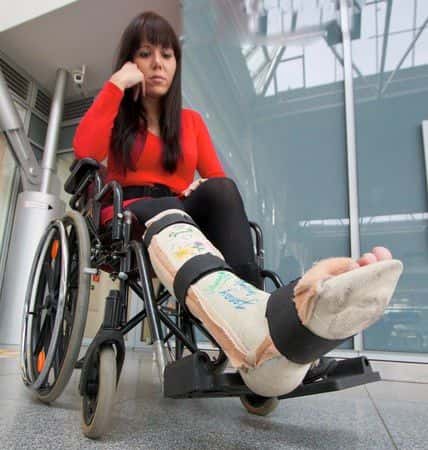Hospital causes leg injury to patient after bone graft surgery
Updated on
This case takes place in Arizona and involves a patient with a full leg cast who was being discharged from a hospital following bone graft surgery. The patient was being transported by wheelchair to another institution for long-term care. The patient was transported in a wheelchair from her room to the transport vehicle. The driver used a makeshift sling and did not use a wheelchair leg extender to support the patient’s leg during transportation. As the result of using the sling, the patient’s bone graft moved and this required her to have further bone graft surgery on her leg. The patient sued the hospital claiming that they were negligent in allowing the driver to use the sling.
Question(s) For Expert Witness
Is a hospital negligent if a hospital transport driver causes a patient's bone graft to move?
Expert Witness Response
 Bone graft surgery is performed when a person’s broken bone fails to heal properly. When a broken bone fails to heal properly it is called a “nonunion.” When this condition is present, surgery may be necessary to enable the bone to heal properly. When bone graft surgery is performed, a surgeon harvests pieces of bone from different areas on the patient and then transplants them to the nonunion site. If the bone graft material moves for some reason, this can cause serious complications including loosening of the stitches from the surgery. In cases involving bone graft surgery, it is necessary for hospital staff to use due care in making sure that a patient’s bone does not move until the bone graft is fully healed. In this case, the hospital staff had a duty to advise the driver that he should use the wheelchair leg extender because this would have prevented the bone graft from moving from the correct position soon after surgery. Since the hospital in this case knew that the bone graft surgery required the patient’s leg to be fully immobilized in a full leg cast, the proper standard of medical care required them to inform the driver to use the wheelchair leg extender to ensure that the bone graft did not move.
Bone graft surgery is performed when a person’s broken bone fails to heal properly. When a broken bone fails to heal properly it is called a “nonunion.” When this condition is present, surgery may be necessary to enable the bone to heal properly. When bone graft surgery is performed, a surgeon harvests pieces of bone from different areas on the patient and then transplants them to the nonunion site. If the bone graft material moves for some reason, this can cause serious complications including loosening of the stitches from the surgery. In cases involving bone graft surgery, it is necessary for hospital staff to use due care in making sure that a patient’s bone does not move until the bone graft is fully healed. In this case, the hospital staff had a duty to advise the driver that he should use the wheelchair leg extender because this would have prevented the bone graft from moving from the correct position soon after surgery. Since the hospital in this case knew that the bone graft surgery required the patient’s leg to be fully immobilized in a full leg cast, the proper standard of medical care required them to inform the driver to use the wheelchair leg extender to ensure that the bone graft did not move.
Subscribe to our newsletter
Join our newsletter to stay up to date on legal news, insights and product updates from Expert Institute.
Sign up nowFind an expert witness near you
What State is your case in?
Subscribe to our newsletter
Join our newsletter to stay up to date on legal news, insights and product updates from Expert Institute.


